
Poison Dart Frogs are poisonous amphibians of the jungle.
©iStock.com/Frank Cornelissen
Poison dart frogs are Central and South American Dendrobatidae amphibians. These unique frogs have amazing colors. They can be red, green, blue, or black. Poison dart frogs are dangerous jungle animals, hence their name. This less-than-1-inch species has poison that can kill both animals and people. Interested in learning more about this dangerous little amphibian? Let’s explore 10 incredible poison dart frog facts!

1. Poison Dart Frogs Can’t Swim Well

The strawberry poison dart frog features unique traits in their eyes that enable them to differentiate between different color variations of their species.
©iStock.com/NTCo
People often picture frogs splashing around lakes and ponds. However, beyond the water is the best spot to find Poison dart frogs. Most poison frog varieties can’t swim effectively, thus they prefer streams and leaf litter. This is because they lack webbing between their toes, and therefore can’t swim as well as other frogs.
2. Scientists Believe That The Food They Eat is The Source of Their Poison

The impact of poison dart frogs’ poison relies on their diet.
©Natalia Kuzmina/Shutterstock.com
A poison dart’s diet has a substantial impact on the amount of poison they can produce, according to researchers. These frogs are known for their ability to shoot poison darts at their prey. On the contrary, confined poison dart frogs prefer to feed on non-poisonous insects such as fruit flies and crickets.
3. Most Captive Poison Dart Frogs Do Not Secrete Poison
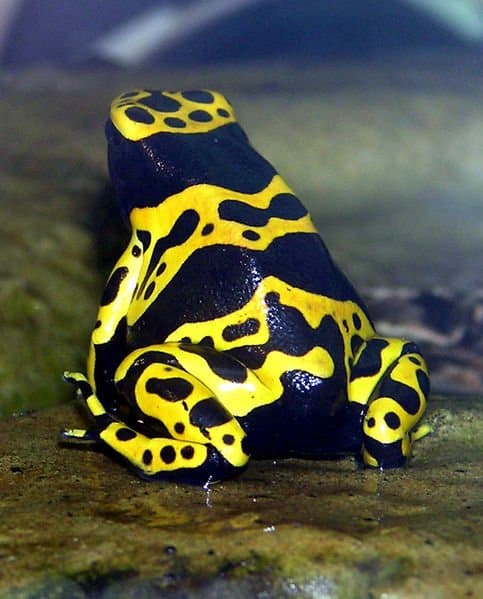
Interestingly, poison dart frogs in captivity don’t secrete poison.
©Arpingstone, Public domain, via Wikimedia Commons – License
Toxins found in the bodies of Poison dart frogs can paralyze or kill any animal that comes into contact with or tries to eat these amphibians, while also scaring away predators. However, not all Poison dart frogs are able to release their known lethal toxins, and many people are ignorant of this fact. It’s also worth noting that most of the chemicals that lend poison dart frogs their bad image may be found in wild species, but poison dart frogs in zoos are not dangerous. This is mainly due to their diet.
4. Poisonous Golden Dart Frogs Are The Most Dangerous
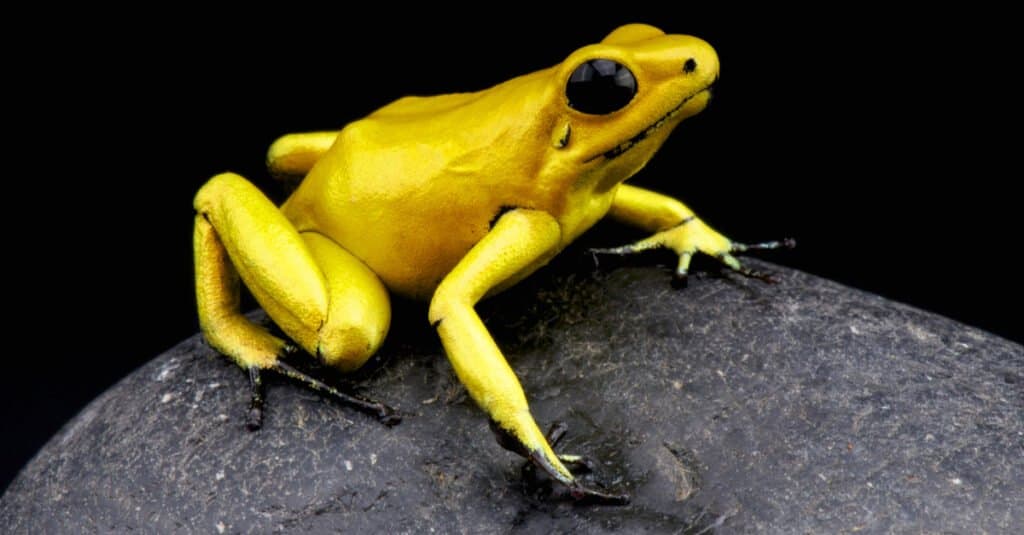
Golden poison dart frogs are the most potent, and dangerous species.
©reptiles4all/Shutterstock.com
The Golden poison dart frog is the most lethal of them all. The glands of poisonous golden frogs secrete excessive amounts of a toxin called batrachotoxin, which is found in most poison dart frogs. Living creatures who consume the frog will experience symptoms such as convulsions, jerking muscles, salivation, and eventually death because the poisons attack the nervous system.
5. Their Poison is Being Researched For Painkillers
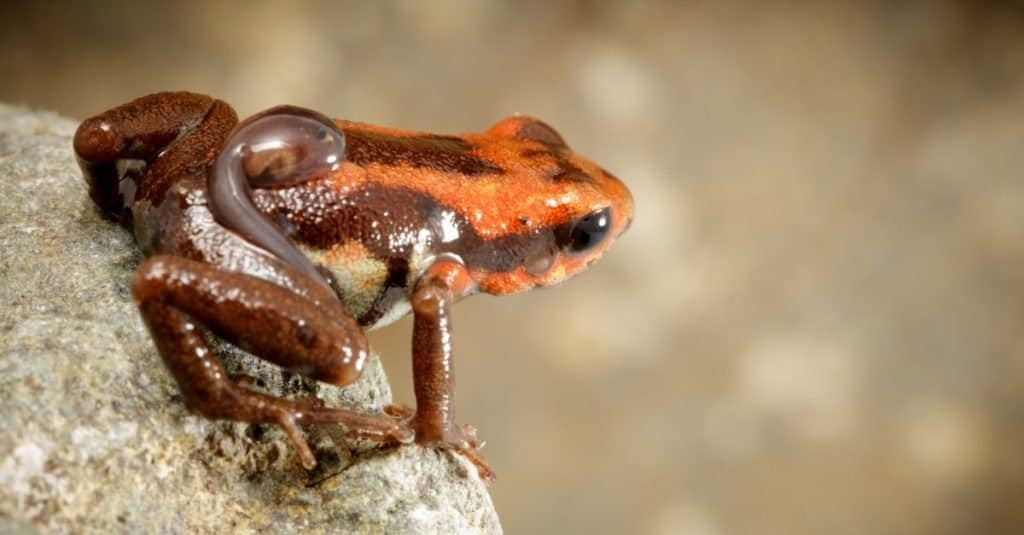
Poison dart frogs may assist with research into pain-relieving treatments.
©Dirk Ercken/Shutterstock.com
Some painkillers may eventually be from the skin of poison dart frog skin. That’s because it’s 200 times as potent as morphine, reportedly. Medical experts are continually investigating poison dart frogs’ medicinal potential.
6. Poison Dart Frogs Engage in Hours-Long Courtship
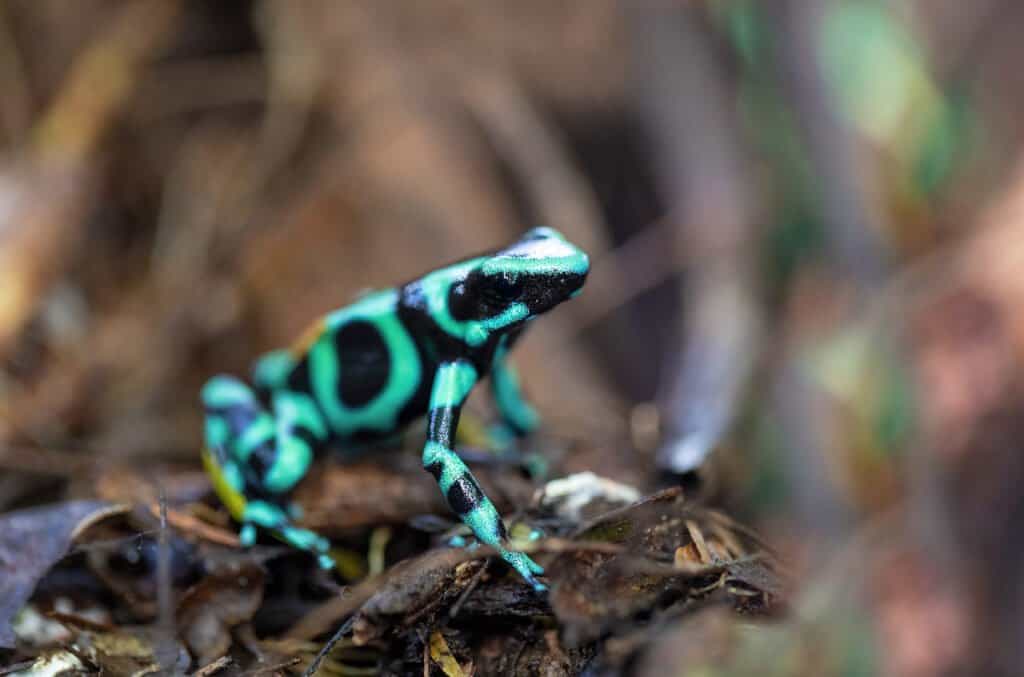
Courtship and mating between poison dart frogs is a long affair.
©iStock.com/Artush
A poison dart frog courtship might last several hours. Initially, males scream or make noises, and then the two frogs chase, hop, and peck. In little batches of tree leaves or on the ground, each female lays about 30 fragile eggs.
7. The Typical Length Of Time For Hatching is 10 to 18 Days
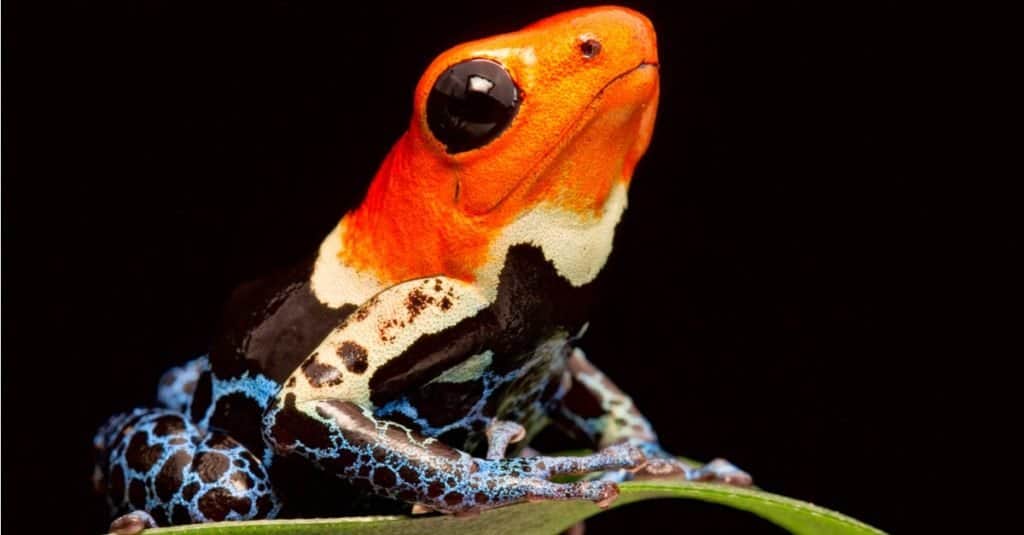
Young frogs are carried to the water by their parents when they hatch.
©Dirk Ercken/Shutterstock.com
Poison dart frogs are unique among amphibians in that the eggs are cared for and protected by both males and females. Hatching can take anywhere from 10 to 18 days, depending on species and ambient temperature. Young frogs are carried to the water by their parents when they hatch.
8. Smuggling of Poison Dart Frogs Happens All The Time

Poison dart frogs are collected by smugglers.
©Dirk Ercken/Shutterstock.com
Rare and newly found poison dart frog species are sought after by some collectors. Smugglers hide them in their suitcases and illegally export them. Around 90 percent of illegally imported poison dart frogs die in transit, according to customs inspectors’ estimates.
9. Within 3 Minutes, Poison Dart Frogs Can Kill You
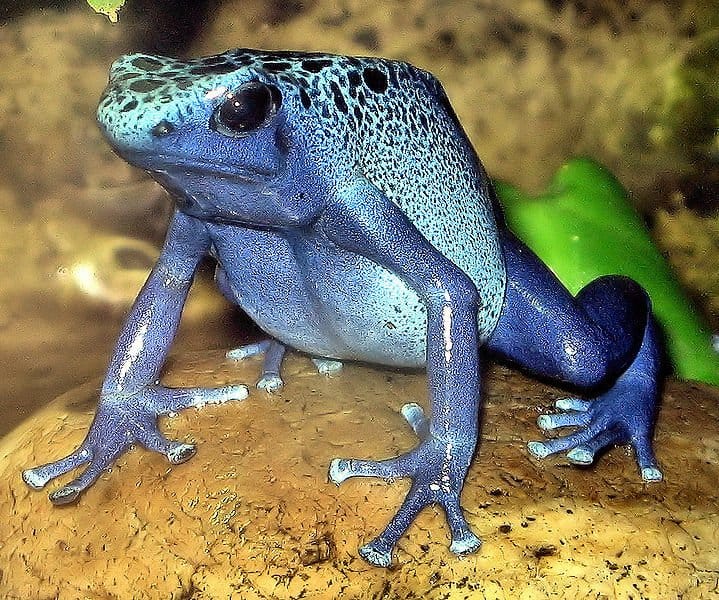
Poison Dart Frogs can kill in a matter of minutes.
©Arpingstone, Public domain, via Wikimedia Commons – License
It takes an average of 10 minutes for a Poison dart frog to kill. Although, it is possible to die within 3 minutes of exposure to their poison. There’s a chance it’ll cause vomiting, paralysis, and maybe heart failure, which would be fatal. Unfortunately, antidotes for the toxin are not identified.
10. Their Complex Patterns And Bright Colors Deter Predators
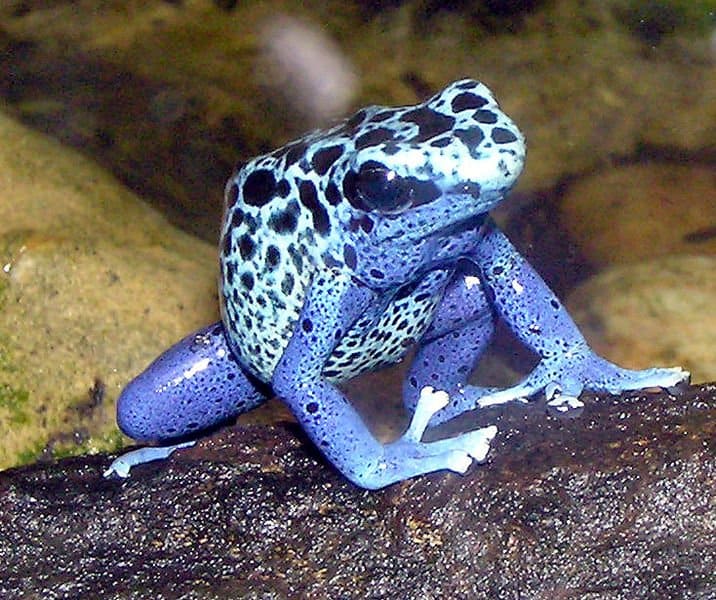
Poison dart frogs come in array of dazzling patterns and colors, which helps protect them from predators.
©Arpingstone, Public domain, via Wikimedia Commons – License
Recent research suggests Poison dart frogs use camouflage to ward off their predators. Poison dart frogs employ “aposematic coloration” to protect themselves. This means their hue warns predators if they pursue or eat them. Their poisonous skin alone can kill a predator.
The photo featured at the top of this post is © Klaus Ulrich Mueller/Shutterstock.com
Thank you for reading! Have some feedback for us? Contact the AZ Animals editorial team.






